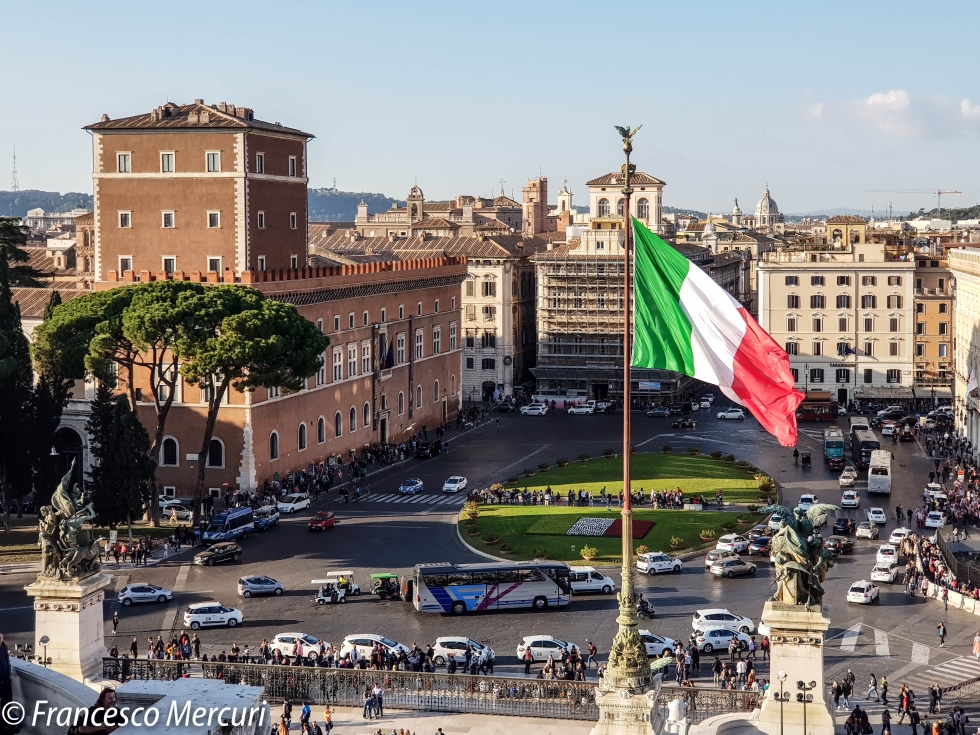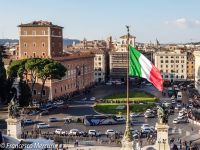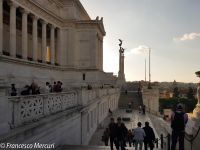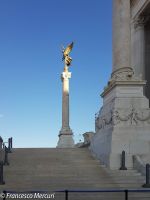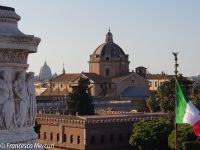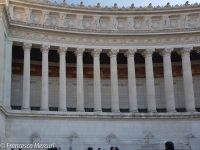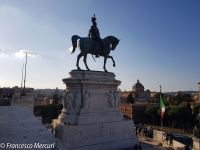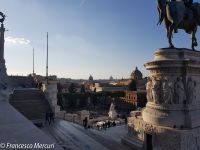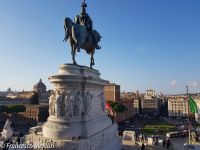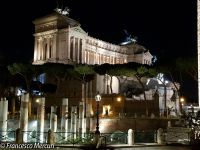This clear contrast with the surrounding buildings has led many Romans to address the monuments with different and sometimes unpleasant nicknames such as: “the Typewriter” (macchina da scrivere), “the Wedding Cake” (la torta nuziale) or even “the Dentures” (la dentiera).
The construction started in 1885, from a project by Giuseppe Sacconi. The Altar was designed as a dedicated monument for Victor Emmanuel II – the first king of Italy who died in 1878 - and that’s why it’s called “Vittoriano”. It was inaugurated in 1911 by Victor Emmanuel III, but finally completed externally in 1927 and internally only in 1935. The monument was also called “The Unknown Soldier” in 1921 after the body of an unknown Italian soldier - who had lost his life during the First World War - was buried inside the building.The dimensions of the Altar of the Fatherland are really remarkable: it is 71 m high (adding the statues on the roof it reaches 81m), 135 m wide and almost 130 m deep. It covers an area of 17.500 square meters and its size it’s enhanced by the spectacular square where it stands: Piazza Venezia.There are so many statues on the Vittoriano that it’s almost impossible to describe them all.However, one of these deserves a specific attention. It’s the bronze equestrian sculpture of Victor Emmanuel, with its 50 tons of weight and both wide and high 12 meters. For a better comprehension of its greatness we can just go back in time a few decades to the day when the sculpture was ready to be taken on the monument: inside the ‘belly’ of the horse a lunch was hosted with the workers that took part in the creation of the equestrian sculpture, 21 people!! The figure of the monarch is 16 times bigger than the real one too.The most famous part of the Altar is certainly the tomb of the unknown soldier which symbolically stands for all the victims of the Great War. Next to the tomb there are two perpetually burning braziers, while on top of it stands the statue of the goddess Rome on a golden background. The Unknown Soldier hosts also important official ceremonies.Up on the staircase – after the equestrian sculpture – there is an enormous colonnade from which tourists can admire the terrific sight of the city. This colonnade is composed of 16 Corinthian columns (of 15 m of heights each) and it’s long 71 meters. On the top of this majestic porch stand two bronze quadrigae which symbolically represent Freedom and Homeland Unity. Perhaps this is the real message behind this controversial monument: the glorification of the unity of the Fatherland and the man that made it possible, Victor Emmanuel II.
Giuseppe Rosselli




